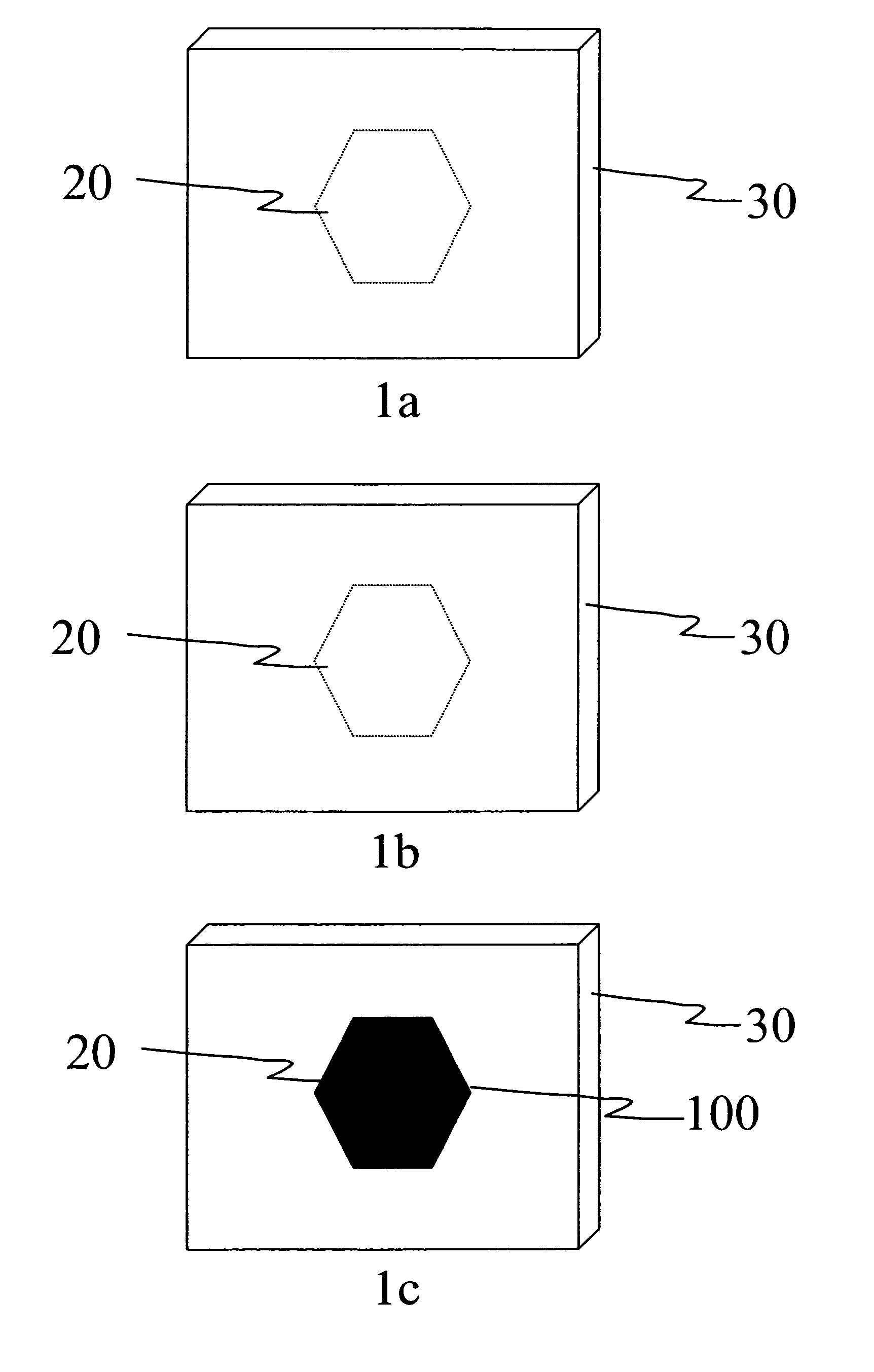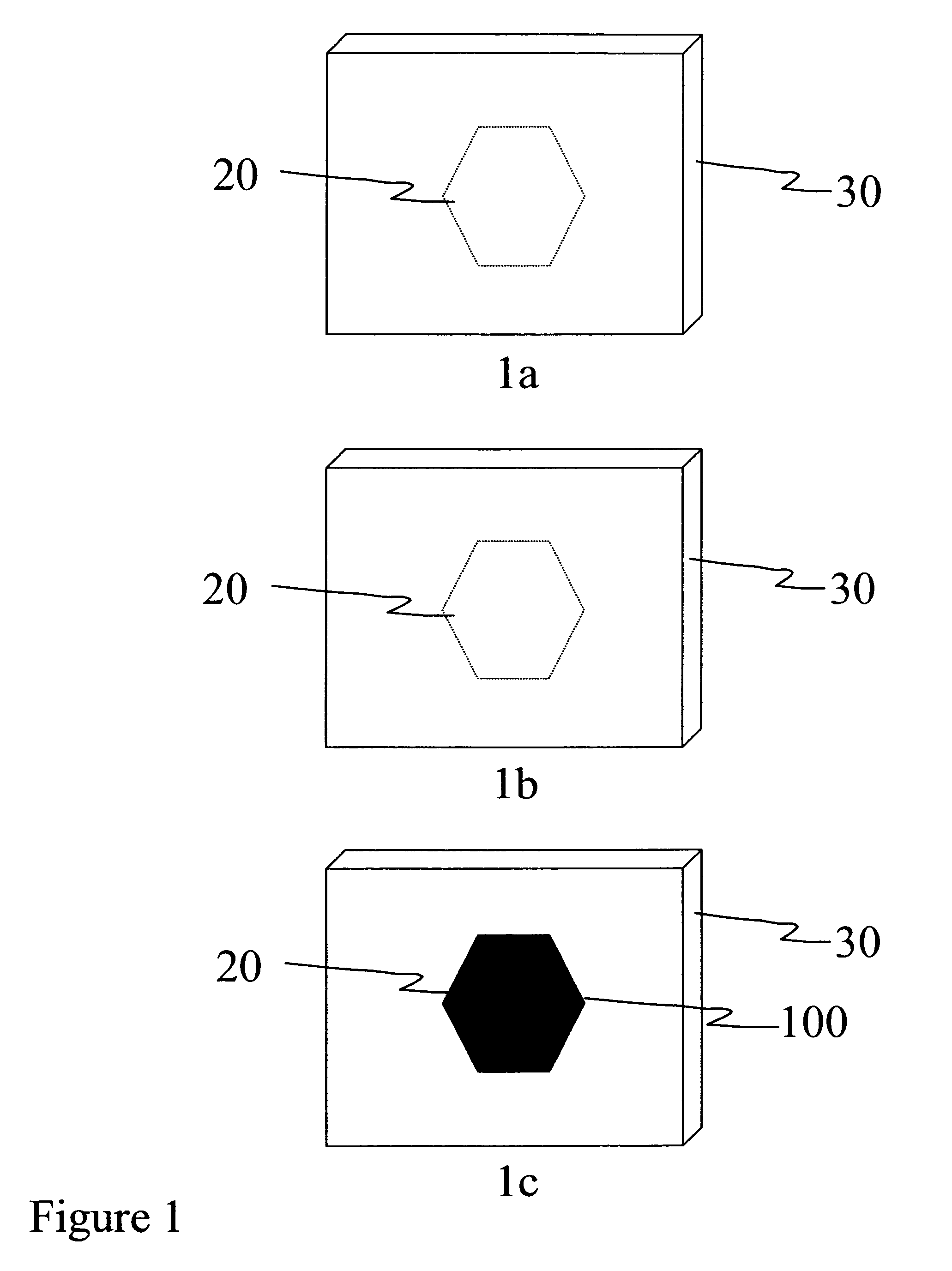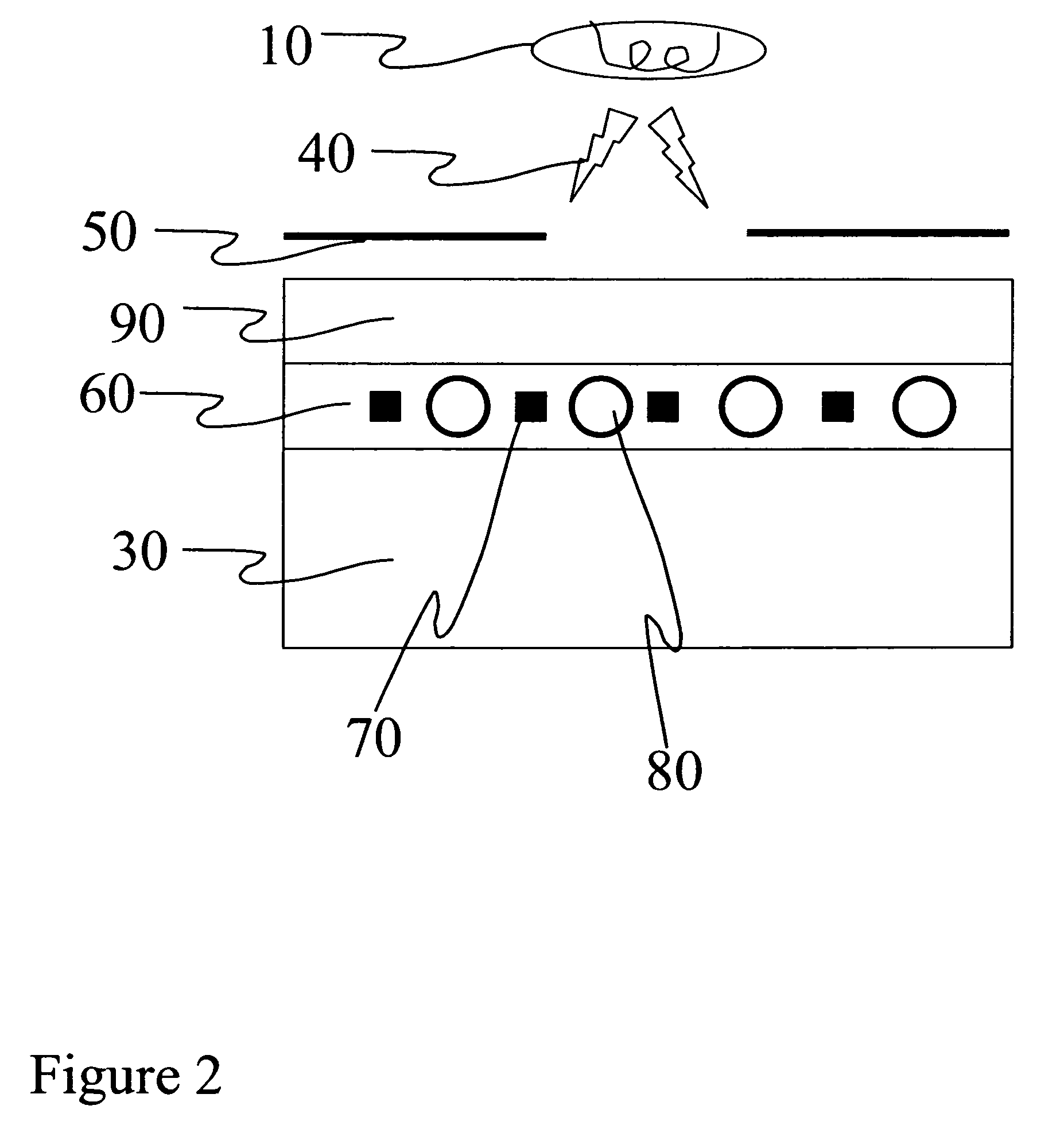Media for detection of X-ray exposure
a technology for x-ray exposure and media, applied in the field of x-ray detection devices, can solve the problems of reducing requiring very large x-ray doses, and affecting the detection efficiency of x-ray radiation,
- Summary
- Abstract
- Description
- Claims
- Application Information
AI Technical Summary
Benefits of technology
Problems solved by technology
Method used
Image
Examples
example 1
[0030]Inorganic materials were exposed to an X-ray beam for specified time and defined X-ray source voltage and current settings. These materials showed a color change as detailed in Table 1.
[0031]
TABLE 1Effect of X-ray Exposure on X-ray Sensitive Inorganic MaterialsX-rayX-ray SourceMaterial ColorMaterial ColorX-raySourceCurrentExposureBefore X-rayAfter X-rayMaterialSourceKilovoltsMilliampsTimeExposureExposurePotassium chlorideX-ray tube75401 minuteWhitePurplePotassium chlorideX-ray tube75403 minutesWhitePurpleSodium bromideX-ray tube75401 minuteWhiteLight BlueSodium chlorideX-ray tube75401 minuteWhiteGolden YellowPotassium iodideX-ray tube75401 minuteWhiteGreenZirconium oxideRotating Anode503001 minuteWhiteBlackZirconium oxideRotating Anode503005 minutesWhiteBlackSodium BicarbonateRotating Anode503005 minutesWhiteLight PinkSilver SulfideRotating Anode503003 minutesWhiteBrownTin OxideRotating Anode503005 minutesLight GrayDark Gray
[0032]All materials in Table 1 showed a color change ...
example 2
[0036]Organic materials were exposed to an X-ray beam for specified time and defined X-ray source voltage and current settings. These materials showed a color change as detailed in Table 2.
[0037]
TABLE 2Effect of X-ray Exposure on X-ray Sensitive Organic MaterialsMaterialX-rayColorMaterialX-raySourceBeforeColor AfterX-raySourceCurrentExposureX-rayX-rayMaterialSourceKilovoltsMilliampsTimeExposureExposureCD2*X-ray tube75403 minutesWhiteDark Pink*CD2: color developer agent 2-amino-5-diethylaminotoluene hydrochloride
[0038]All materials in Table 2 showed a color change upon X-ray exposure without any chemical or physical processing steps. All materials in Table 2 do not show a color change upon exposure to ambient light, including ultraviolet light.
example 3
[0042]Polymeric materials were exposed to an X-ray beam for specified time and defined X-ray source voltage and current settings. These materials showed a color change as detailed in Table 3.
[0043]
TABLE 3Effect of X-ray Exposure on X-ray Sensitive Polymeric MaterialsMaterialX-rayColorMaterialX-raySourceBeforeColor AfterX-raySourceCurrentExposureX-rayX-rayMaterialSourceKilovoltsMilliampsTimeExposureExposure5 minuteX-ray tube7540 1 secondClearYellow-DevconorangeEpoxy*5 minuteX-ray tube7540 5 secondsClearYellow-DevconorangeEpoxy5 minuteX-ray tube754010 secondsClearYellow-DevconorangeEpoxy5 minuteX-ray tube754015 secondsClearYellow-DevconorangeEpoxy*Bisphenol-A diglycidyl ether resin (DGEPBA) mixed with hardener consisting of a polyamine-polymercaptan mixture, commercially available from ITW Devcon, Danvers, Mass.)
[0044]The materials in Table 3 showed a color change upon a wide range of X-ray exposure times without any chemical or physical processing steps. All materials in Table 3 do n...
PUM
| Property | Measurement | Unit |
|---|---|---|
| optical density | aaaaa | aaaaa |
| optical density | aaaaa | aaaaa |
| adhesive | aaaaa | aaaaa |
Abstract
Description
Claims
Application Information
 Login to View More
Login to View More - R&D
- Intellectual Property
- Life Sciences
- Materials
- Tech Scout
- Unparalleled Data Quality
- Higher Quality Content
- 60% Fewer Hallucinations
Browse by: Latest US Patents, China's latest patents, Technical Efficacy Thesaurus, Application Domain, Technology Topic, Popular Technical Reports.
© 2025 PatSnap. All rights reserved.Legal|Privacy policy|Modern Slavery Act Transparency Statement|Sitemap|About US| Contact US: help@patsnap.com



